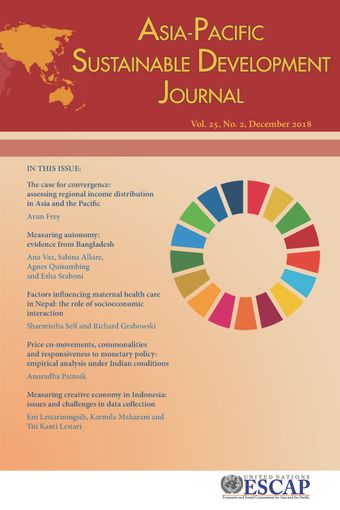-
The case for convergence: Assessing regional income distribution in Asia and the Pacific
- Source: Asia-Pacific Sustainable Development Journal, Volume 25, Issue 2, Aug 2019, p. 1 - 19
-
- 21 Aug 2019
- Previous Article
- Table of Contents
- Next Article
Abstract
This paper considers income inequality in Asia and the Pacific, examining whether there has been an increase or decrease in income inequality among countries in the region in recent decades. By analysing the position of countries’ GDP per capita relative to that of a reference economy (Australia), the study finds that between the years 1970 and 2014, most of the region’s less affluent countries were able to catch up in relative terms, allowing them to slowly move up the income matrix towards higher tier groups. Subregional examination reveals that most of the income convergence in the Asia-Pacific region was due to exceptional economic growth in East and North-East Asia and, to a lesser extent, in South-East Asia. While the paper shows that relative income differences between countries in the region have fallen since the 1970s, it points to the need for differentiating between relative and absolute measures of inequality. Insufficient convergence and substantial initial differences in GDP per capita have meant that, despite a decline in relative inequality, absolute differences in average income have grown during the same period.





